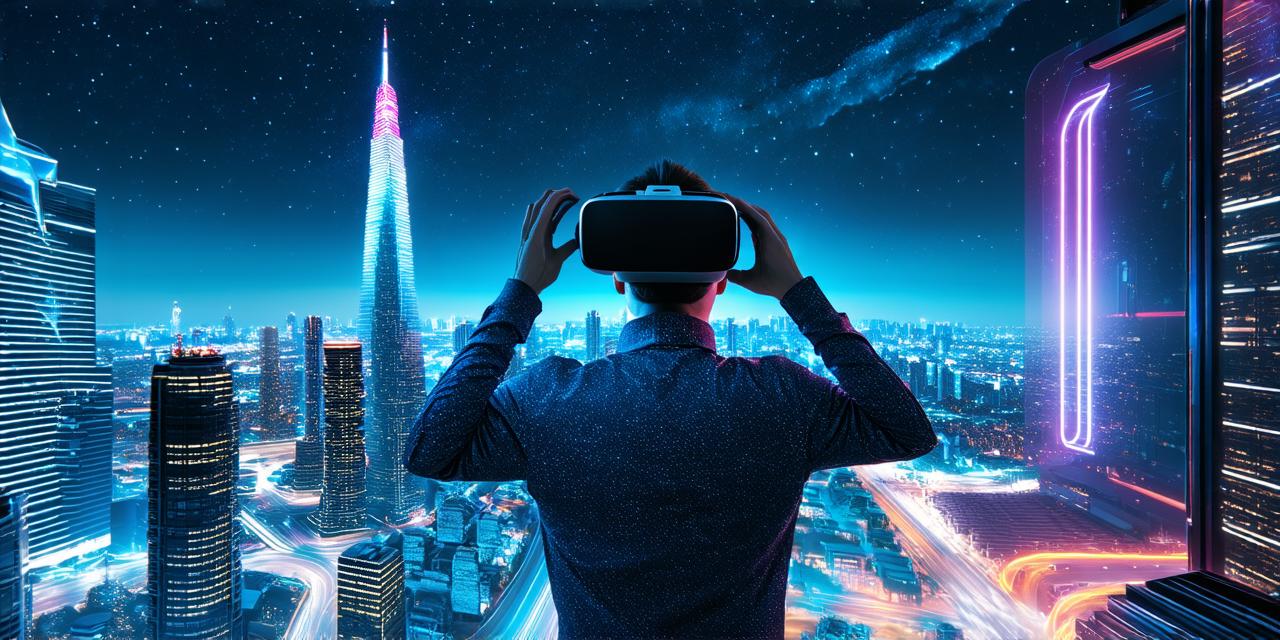Virtual reality (VR) technology has come a long way since its inception. From simple 2D simulations to immersive and interactive 3D experiences, VR has captured the imagination of people all over the world. However, one question that continues to plague developers is: how realistic does virtual reality feel?
Factors Affecting Realism in Virtual Reality
Graphics Quality
The quality of graphics is one of the most important factors that contribute to the realism of virtual reality experiences. High-quality graphics with realistic lighting, textures, and shadows can make a VR environment feel more immersive and believable. On the other hand, low-quality graphics can detract from the overall experience and make it difficult for users to fully immerse themselves in the virtual world.
Interactivity
Interactivity is another key factor that affects realism in virtual reality experiences. The ability to interact with virtual objects and environments in a realistic manner, such as by grabbing and manipulating them or moving through a 3D space, can greatly enhance the sense of immersion and make VR feel more like a real-world experience.
Motion Sickness
Motion sickness is a common issue that can affect the realism of virtual reality experiences. When users experience motion sickness, it can be difficult for them to fully immerse themselves in the virtual world and make it feel more realistic. To combat this issue, developers must take into account factors such as frame rate, latency, and movement speed when designing VR experiences.
Haptic Feedback
Haptic feedback is a technique that uses physical sensations to provide users with a sense of immersion in the virtual world. This can include vibration, resistance, or other tactile sensations that mimic real-world interactions with objects. By incorporating haptic feedback into VR experiences, developers can make them feel more realistic and engaging for users.
Field of View
The field of view (FOV) is the angle at which a user can see in the virtual world. A wider FOV can provide users with a more immersive experience by allowing them to see more of the environment around them. However, a very wide FOV can also cause motion sickness and detract from the overall realism of the experience.
Case Studies and Personal Experiences
1. The Oculus Quest
The Oculus Quest is a standalone VR headset that has become incredibly popular since its release in 2019. Many users have reported that the Oculus Quest provides a highly immersive experience, with realistic graphics and interactivity that make it feel like they are truly in the virtual world.
2. The HTC Vive Pro Eye
The HTC Vive Pro Eye is another high-end VR headset that has gained popularity for its ability to provide a highly immersive experience. Users have reported that the Vive Pro Eye’s realistic graphics, interactivity, and haptic feedback make it feel like they are truly in the virtual world.
3. The Oculus Rift S
The Oculus Rift S is a VR headset that was released in 2019 and has become popular for its ability to provide an affordable and immersive experience. While some users have reported issues with motion sickness and graphics quality, many others have praised the Rift S’s interactivity and haptic feedback, which make it feel like they are truly in the virtual world.
4. Personal Experience
As a VR developer, I can attest to the power of virtual reality to provide a highly immersive experience. In my own personal experience, I have worked on several VR projects and have seen firsthand how realistic graphics, interactivity, and haptic feedback can make a virtual world feel more like a real-world experience.
Latest Advancements in VR Technology
1. Wireless VR Headsets
Wireless VR headsets, such as the Oculus Quest 2 and HTC Vive Pro Eye, have become increasingly popular in recent years. These headsets eliminate the need for a computer or console, making it easier for users to set up and use VR experiences. Wireless VR headsets also provide users with greater freedom of movement, allowing them to move around more easily in the virtual world.
2. Eye-Tracking Technology
Eye-tracking technology is a relatively new development that allows VR headsets to track where users are looking. This information can be used to adjust the graphics and interactivity of the virtual environment, making it feel more natural and intuitive for users. Eye-tracking technology also has the potential to improve performance by reducing the amount of data that needs to be processed, which can help reduce motion sickness and latency.
3. Haptic Feedback Devices
Haptic feedback devices, such as gloves and vests, are being developed to provide users with even more realistic sensations in the virtual world. These devices can mimic the texture of objects, providing users with a more immersive experience that feels closer to the real world.
FAQs
1. What is motion sickness and how does it affect VR?
Motion sickness is a common issue that can affect VR experiences. It occurs when users experience discomfort or nausea due to the difference between what they are seeing in the virtual world and what their body is experiencing in reality. To combat motion sickness, developers must take into account factors such as frame rate, latency, and movement speed when designing VR experiences.
2. How can haptic feedback improve VR experiences?

Haptic feedback is a technique that uses physical sensations to provide users with a sense of immersion in the virtual world. By incorporating haptic feedback into VR experiences, developers can make them feel more realistic and engaging for users. Haptic feedback devices, such as gloves and vests, can mimic the texture of objects, providing users with even more immersive sensations.
3. What are some common issues with VR headsets?
Some common issues with VR headsets include motion sickness, graphics quality, and field of view. Motion sickness can be caused by a variety of factors, including frame rate, latency, and movement speed. Graphics quality is also important, as high-quality graphics with realistic lighting, textures, and shadows can make a VR environment feel more immersive and believable.
Summary
Virtual reality has come a long way since its early days, and it continues to be an incredibly powerful tool for providing users with highly immersive experiences. With advances in technology, such as wireless VR headsets and eye-tracking technology, developers have even greater opportunities to create virtual worlds that feel more like the real world. Whether you are a developer or a user, there is no doubt that virtual reality will continue to be an exciting and innovative field for years to come.
